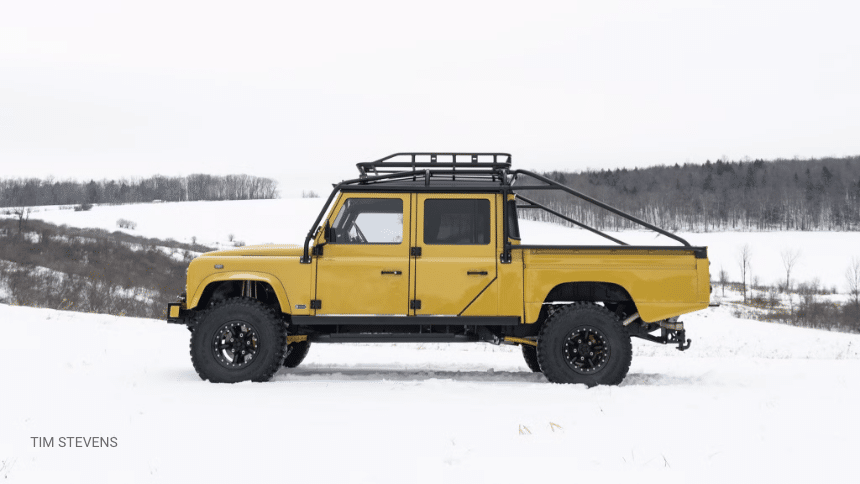

Reviews
February 21, 2025
by Tim Stevens
The original Land Rover Defender has passed from utility to luxury—with prices to match.
The collector-car industry constantly shifts direction based on the winds of global financial markets and the whims of those whose sails swell the biggest. But where some trends are difficult to spot, there’s one that’s hard to miss: Defenders are hot right now.
It’s a fire that Land Rover is happy to pour fuel upon, returning the model to its lineup in 2020 and recently giving it a shot of adrenaline to create the monstrous Octa. Yet while the new Defender is easy to respect and even easier to live with, the boxier classic models really tug the heartstrings for many.
While the original Land Rover, the Series I, will forever be an icon, it is the Defender models from the mid-Eighties and beyond that have been receiving stratospheric valuations lately. The models were originally called simply the 90, the 110, and the 127 (later the 130)—a nomenclature roughly corresponding to each model’s respective wheelbase—Land Rover put them all under the Defender umbrella after the introduction of the Discovery in 1989.
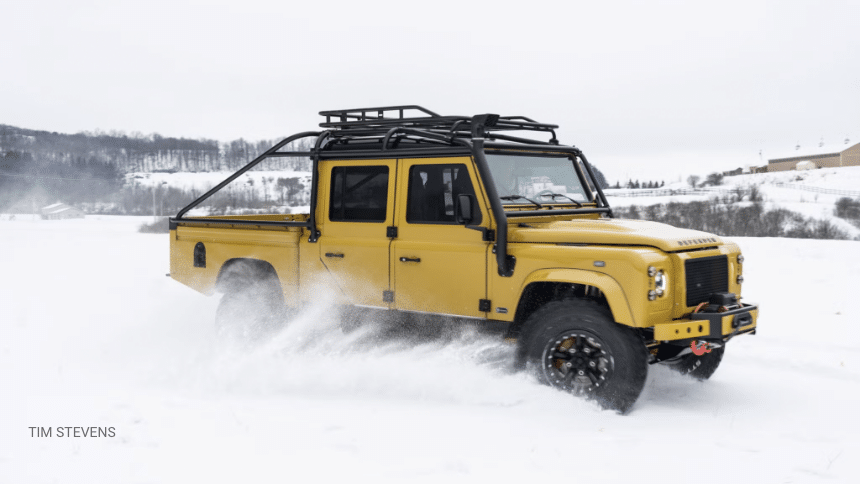
After countless modifications, hundreds of thousands of dollars spent, Paul has created the perfect formula of parts suppliers, mechanics, leathers, fabrics, and design for true British classic Land Rover Defenders.
Here in the U.S., we only got Defenders for a very short while. The so-called North American Spec, or NAS, models were sold between 1994 and 1997. Somewhere short of 8000 were imported over that period, powered by a 182-hp 3.9-liter V-8, a limited run thanks to ever-evolving American crash and emissions regulations.
Finding a good original car is, understandably, a challenge—and Defenders tend to make serious money when they come to market. Thankfully, Land Rover made plenty more for the European market, models that are increasingly falling outside our 25-year limit on imports. There is no shortage of companies ready and willing to find and ship you one, and more are offering to elevate your machine to a level of fit and finish far beyond anything that rolled out of Land Rover’s factory in England when new.
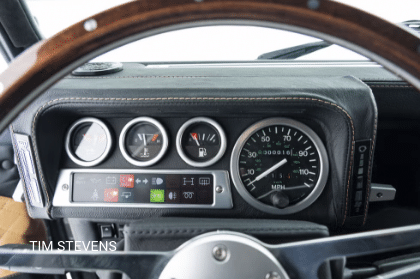
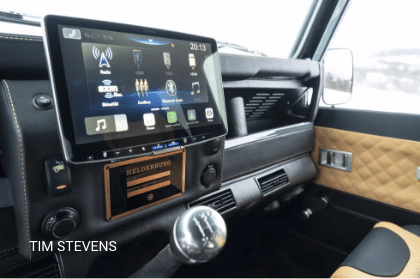
Helderburg Defenders wants to be at the top of that list of prestigious builders. The company is based in Sharon Springs, New York, a small, agrarian village that, despite its proximity and similar-sounding name to Saratoga Springs, offers few of the chic trappings of that town to the east.
Few, that is, until you step into Paul Potratz’s garage, which not only contains a half-dozen Defenders but is also riddled with numerous posh adventure trappings, including shotguns, Wellington boots, and vintage motorcycles, many British.
Potratz founded Helderburg in 2019 with William Lines, who lives in the U.K. and oversees the company’s British operations. It is situated just down the road from the Defender’s original manufacturing location in Solihull near Birmingham. That’s not a coincidence.
“We’re able to hire people that worked for Land Rover,” Potratz said, meaning many of the people who restore these Defenders built them in the first place.
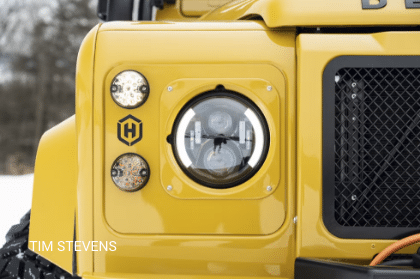
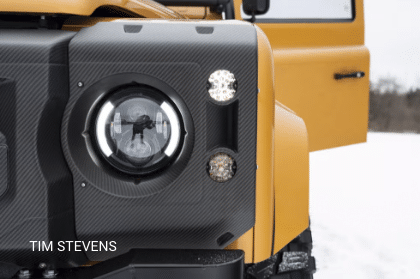
Using the original workers is just part of Helderburg’s efforts to keep things original. The company sources left-hand-drive Defenders from throughout Europe, tears them down to a bare frame, and then rebuilds them to better-than-new specification, all while preserving the details that made them unique, both large and small.
On the small side, we have things like the aluminum body panels, which are spot-welded in place, preserving the subtle divots along the rear fenders that punctuate the originals.
On the far bigger side, we have the engine. Many Defender builders eagerly evict the original inline-four 300tdi diesel engines from the noses of their machines, often swapping in a GM-sourced V-8 or the like. For Helderburg’s Potratz, that’s nothing short of sacrilege.
“We’re not going to do that. And it just kind of takes away from the heritage,” he says. “If you want the GM, go buy a GM.”
Helderburg Defenders are numbers-matching machines, which Potratz says will only help their values in the long run. But while the blocks remain, everything else is subject to replacement.
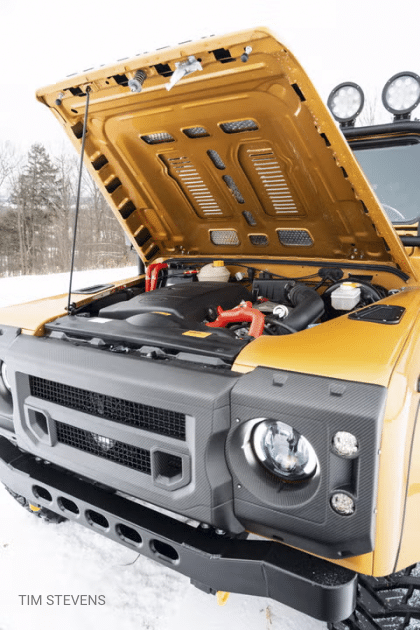
Helderburg offers a variety of packages to elevate the humble 300tdi, everything from minor tweaks and retunes to bored-out cylinders with upgraded internals and turbos to match. The ever-evolving top-shelf model makes about 220 hp and 440 lb-ft of torque, roughly double the 300tdi’s original output.
Power level is just one of a series of decisions buyers must make when configuring their Defender. Custom paints, beefy winches, roll cages, uprated differentials, and plenty more are all on offer. On the inside, Helderburg fits bespoke leather interiors and replaces much of the original plastic switchgear with finer stuff.
So, yes, the windows still roll down with a crank, but that crank is made of billet aluminum. This, in many ways, perfectly represents what the Helderburg experience is all about.
But before all those details are set, the buyer has a bigger decision to make: What size Defender? Helderburg will gladly build you a 90, a 110, or a 130, but if you want that longest option, you’d better hurry. Potratz says 130s are becoming increasingly rare: “They use these for railroad trucks, logging trucks, so there’s just not many in existence.”
I got to sample all three versions over the better part of a snowy day at Helderburg’s headquarters, a horse farm with plenty of open pasture and private land to enable the sorts of pursuits frequented by the landed gentry who can afford these machines. I, however, was just there to drive.
Despite eye-watering prices, upwards of $450,000 for a well-outfitted 130, each was entirely approachable on the road. Despite rolling on all-terrain 35-inch tires chosen for their knobby style rather than cold-weather performance, these machines were a simple joy on the road.

It took a strong kick on the throttle and a little patience to induce wheelspin. The relaxed power delivery of the 300tdi, even the tuned editions, means that such histrionics only happened on demand and were easily quelled.
It is best not to indulge too much, though, as the steering on the original Defender is slow and vague. The shifter, too, is tall and its throws long, but I was never left searching for the next gear. Locking the differentials is a bit of a process, requiring you to swing the short lever connected to the transfer case through left and back, then hold it there as you creep forward to get everything properly engaged.
The feel of the controls, then, is thoroughly vintage. The extra cladding added in the new body panels helps to keep the worst of the powertrain’s harshness from the cabin, but the Fox suspension clearly prioritizes off-road performance over on-road manners.
That’s especially true in the 90. Its reduced dimensions made it feel far more lively on the road but also substantially more nervous. Yet when I powered through a snowbank, heading for ungraded and unplowed terrain, everything clicked right into place. Here, bounding through deep snow and flying across an open pasture, each of the Helderburg Defenders felt happy, stopping and going without issue despite the improper tires.
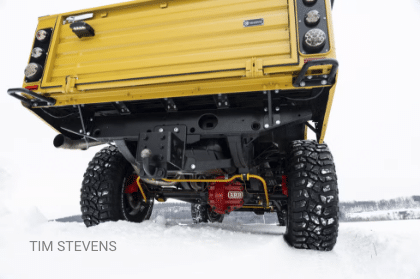
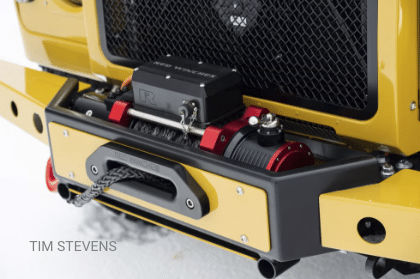
The heavy snow cover meant no low-speed rock-crawling on that day, the sorts of terrain where these machines excel, but with Cooper Discoverer STT Pro tires underneath and Red winches up front, I can’t imagine the car wanting on the trails.
Whether this is the ultimate roadgoing Defender, though, I’m not so sure. That 300tdi engine is certainly part of the experience, but I can’t say I found any of the diesels I sampled particularly charming. Tuning them to such extreme heights surely won’t do anything to help their legendary reliability, either. Additionally, I found the liberal application of the Helderburg logo on virtually every surface to be a bit much.
And, again, there’s the cost. If you want a basic machine, a simple 90 with minimal add-ons, you’ll spend around $250,000 to start. Add about another $100,000 for a 110; a 130 with everything will set you back nearly half a million dollars.
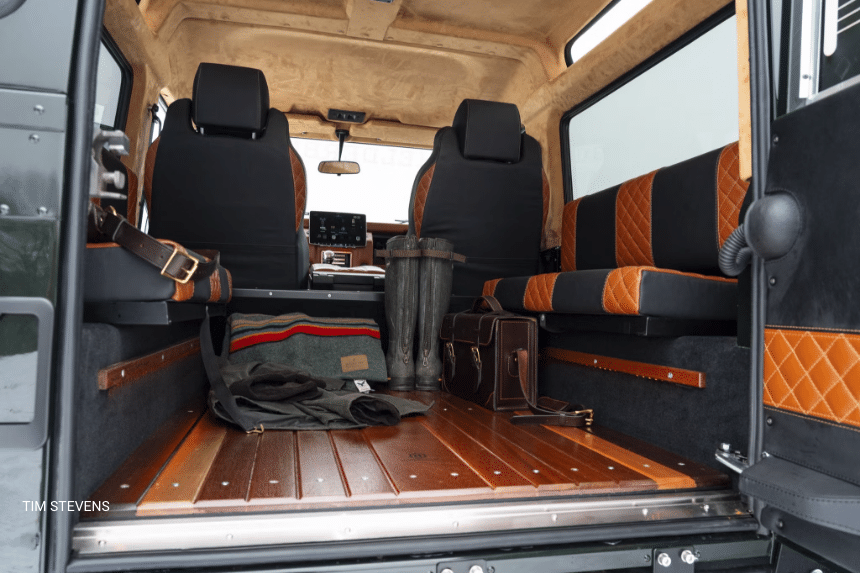
That’s far too rich for my blood, but thankfully, there are other, cheaper options out there. Defenders are relatively common in the European market, so importing one could be far more economical, but that’s changing.
“I used to be able to buy a Defender for about £4000, £5000 [roughly $5000–$6300], and now I can’t even touch one for £25,000 [about $31,500],” Portraz says.
There are other options on the bespoke side, too. E.C.D. Automotive Design in Florida is one of the biggest, building Defenders that trade some tradition for a lower cost.
John Price, director of vehicle design at E.C.D., told me that the tried and true LS swap is a popular option. “Most clients prefer the power and reliability of a GM drivetrain. For those who want a diesel option, we offer the Cummins R2.8, which is more powerful and dependable than the original 300tdi factory options.”
E.C.D. will even build you a Defender with a Tesla-sourced EV powertrain if you really want to be a rolling affront to Land Rover purists.
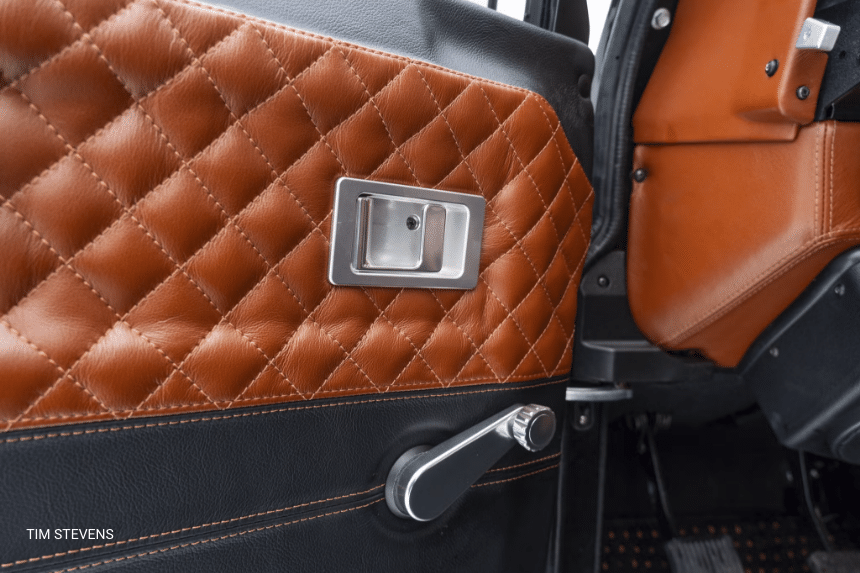
And there are plenty of other builders out there too. Land Rover itself is in the restomod Defender game with its Works Bespoke division.
Which is the best path? Well, where do you want to draw the line on authenticity, and how much are you willing to spend? The goal of any good restomod should be to enhance the original while preserving its character, to iron out the crow’s feet but keep the laugh lines.
The team at Helderburg clearly has great respect for that character and for doing things right. That requires patience, though. Potratz told me that the company builds about 30 or 40 cars per year and that orders placed today will not be filled for at least another 18 months.
That’s a long time to wait for a toy as fun as this. But as Defenders have always been famed for unstoppability rather than outright speed, perhaps the delayed gratification is entirely in keeping with the tradition.
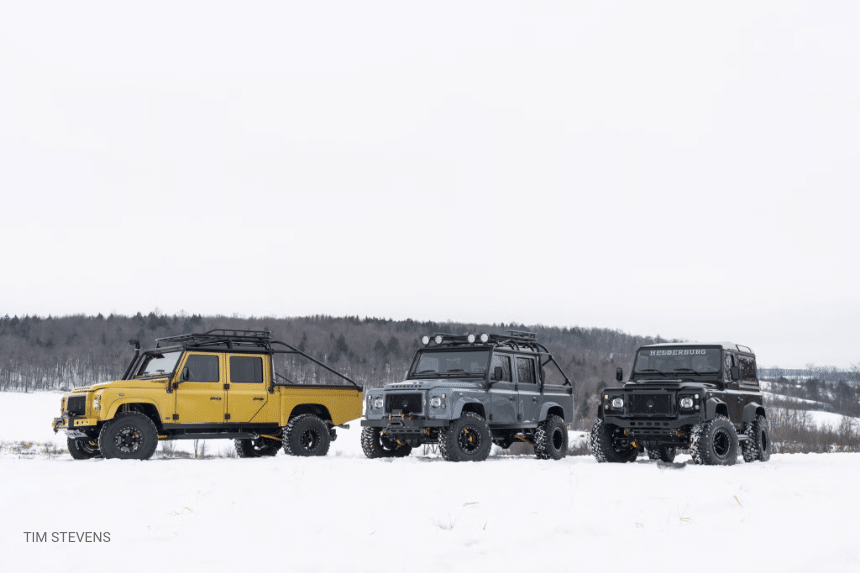
See article on Road & Track
©2025 Hearst Autos, Inc. All Rights Reserved.


